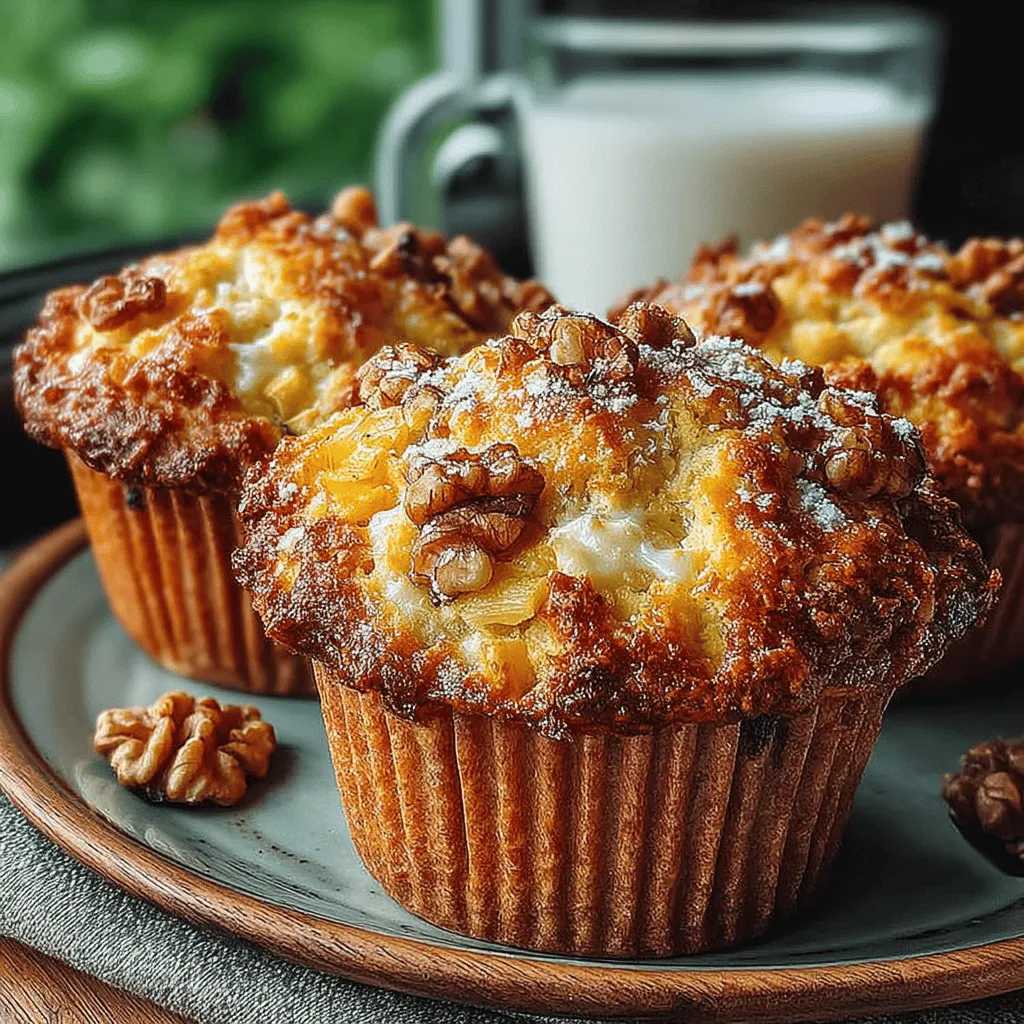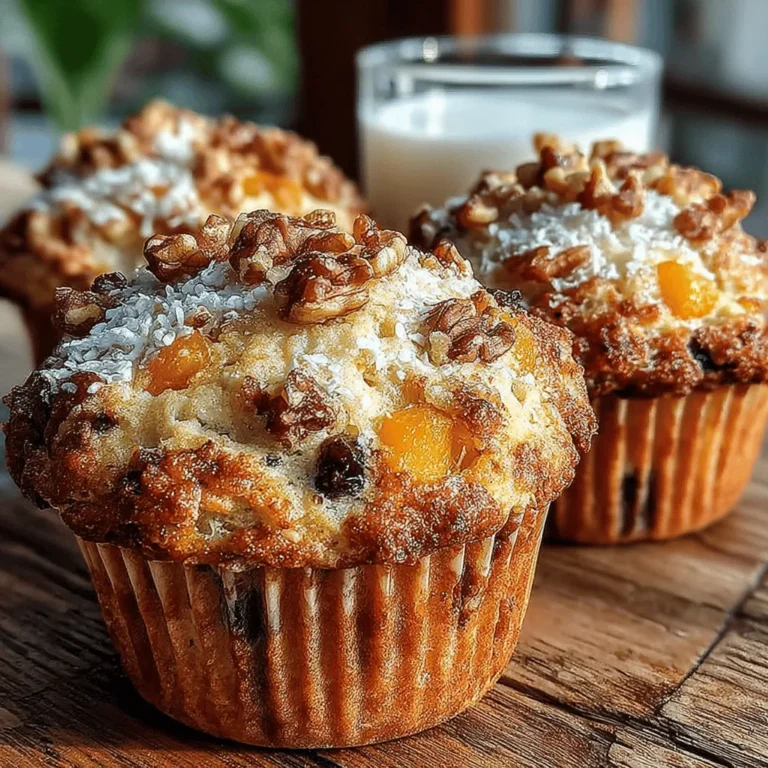Nourishing Back To School Breakfast Muffins: A Healthy Start for Busy Mornings
As the back-to-school season approaches, the hustle and bustle of busy mornings can often overshadow the importance of a nutritious breakfast. A healthy breakfast not only fuels the body but also enhances concentration and overall performance throughout the day. For families looking to streamline their morning routines while ensuring their children receive essential nutrients, Back To School Breakfast Muffins emerge as a convenient and wholesome solution. These muffins are designed to be both delicious and filling, making them an ideal choice for busy weekdays.
One of the key advantages of homemade muffins is the control it gives you over the ingredients. Unlike many store-bought options, which are often laden with preservatives, artificial flavors, and excessive sugars, homemade muffins allow for customization. You can select wholesome ingredients that cater to your family’s dietary preferences and restrictions. With just a few simple steps, these muffins can be prepared in advance, providing a quick grab-and-go breakfast that doesn’t compromise on health or taste.
Understanding the Ingredients
To craft the perfect Back To School Breakfast Muffins, it’s crucial to understand the role each ingredient plays in both nutrition and flavor. Here’s a closer look at some of the primary components of this recipe:
– Rolled Oats: A staple in many healthy recipes, rolled oats are packed with dietary fiber, which aids digestion and helps maintain steady energy levels. The soluble fiber in oats can also support heart health and may help regulate blood sugar levels, making them an excellent choice for growing children.
– All-Purpose or Whole Wheat Flour: Depending on your family’s dietary needs, you can choose between all-purpose flour or whole wheat flour. Whole wheat flour is higher in fiber and nutrients, offering a more wholesome option that can contribute to a feeling of fullness and sustained energy.
– Brown Sugar: This natural sweetener brings a hint of molasses flavor, enhancing the muffins’ taste without overwhelming sweetness. While it’s still important to use sugar in moderation, brown sugar can be a better alternative to refined white sugar.
– Unsweetened Applesauce: A fantastic substitute for oil in baking, unsweetened applesauce adds natural moisture to the muffins while reducing overall fat content. It also provides a subtle sweetness, making it a popular choice in healthier baking.
– Fresh Fruit: Incorporating fresh fruits such as bananas, blueberries, or diced apples not only adds natural sweetness but also infuses the muffins with vitamins, minerals, and antioxidants. Fruits contribute to a balanced diet and enhance the flavor profile of the muffins.
– Nuts and Seeds: Optional additions like walnuts, almonds, or chia seeds can elevate the muffins by providing healthy fats and protein. These ingredients not only add a delightful crunch but also contribute to satiety, making the muffins more filling.
Step-by-Step Guide to Making Back To School Breakfast Muffins
Now that you have a clear understanding of the ingredients and their benefits, let’s dive into the step-by-step process of making these nutritious breakfast muffins. Following these steps will ensure that your muffins turn out fluffy and flavorful.
Preheat the Oven:
Start by preheating your oven to 350°F (175°C). Preheating is an essential step that ensures your muffins bake evenly and rise properly. While the oven is warming up, you can prepare the muffin batter, maximizing your efficiency in the kitchen.
Mixing Dry Ingredients:
In a large mixing bowl, combine the dry ingredients: rolled oats, flour, brown sugar, and any baking powder or baking soda required by your recipe. It’s important to whisk these dry components together thoroughly. This step helps to evenly distribute the leavening agents and ensures a consistent texture in your finished muffins. A well-mixed dry mixture will prevent any lumps and ensure that each muffin rises uniformly.
Combining Wet Ingredients:
In a separate bowl, mix the wet ingredients, including the unsweetened applesauce and any eggs or milk specified in your recipe. If you’re using bananas or other fruits, mash or chop them as necessary before adding to the mixture. The goal here is to achieve a smooth consistency that will blend seamlessly with the dry ingredients. Whisking the wet ingredients together ensures that they are well-combined and ready to integrate with the dry mixture.
Merging Mixtures:
Once both mixtures are prepared, it’s time to combine them. Pour the wet ingredients into the bowl with the dry ingredients. Using a spatula or wooden spoon, gently fold the two mixtures together. It’s crucial to mix just until you see no dry flour; overmixing can lead to dense muffins. The key is to maintain a light and airy texture, which will yield fluffy muffins once baked. If you’re adding any optional ingredients like nuts or seeds, fold them in at this stage to ensure they are evenly distributed throughout the batter.
By following these initial steps, you’ll be well on your way to creating delicious Back To School Breakfast Muffins that are not only healthy but also a delightful treat for your family. The combination of wholesome ingredients and straightforward preparation makes these muffins an ideal choice for busy mornings, providing the nourishment needed to kickstart the day.

Adding Fruits and Nuts
One of the most delightful aspects of breakfast muffins is their versatility. You can easily customize your muffins by adding fruits and nuts based on what’s in season or your personal preferences.
– Fruits: Consider incorporating mashed bananas, grated zucchini, or finely chopped apples for added moisture and sweetness. Berries such as blueberries, raspberries, or diced strawberries add a pop of flavor and nutrition. For a tropical twist, try adding crushed pineapple or shredded coconut. If you’re looking for a unique taste, diced peaches or pears can also work wonders.
– Nuts and Seeds: Almonds, walnuts, pecans, or hazelnuts can provide a satisfying crunch while boosting the muffin’s nutrient profile. For a protein punch, add seeds like chia, flaxseed, or pumpkin seeds. If you’re preparing muffins for young kids, you might want to chop the nuts finely or omit them altogether to avoid any choking hazards.
Filling the Muffin Tins
Achieving the perfect muffin means paying attention to the way you fill your muffin tins. Proper portioning ensures that your muffins rise beautifully and have an even texture.
– Portion Control: Use a standard ice cream scoop or a measuring cup to portion out the batter evenly into the muffin tins. This technique not only guarantees uniformity in size but also helps with baking time consistency. Fill each muffin cup about 2/3 full, which allows room for the muffins to rise without overflowing.
– Ensuring Proper Rise: To get that perfect dome shape that everyone loves, avoid overmixing the batter, as this can lead to dense muffins. Gently fold in your mix-ins and stop mixing when just combined. This approach helps to keep the muffins light and fluffy.
Baking to Perfection
Understanding how to determine if your muffins are properly baked is key to achieving muffin perfection.
– Visual Cues: As your muffins bake, keep an eye on their tops. They should be golden brown and slightly springy to the touch. You’ll also notice the edges pulling away from the sides of the muffin tin, which is a great visual indicator that they are likely finished.
– Toothpick Testing: The classic toothpick test is a reliable method for checking doneness. Insert a toothpick into the center of a muffin; if it comes out clean or with a few moist crumbs attached, it’s ready. If the toothpick comes out wet with batter, give the muffins a few more minutes in the oven.
Cooling and Serving
Cooling your muffins properly is crucial for maintaining their texture and flavor.
– Cooling Best Practices: Once you’ve removed the muffins from the oven, allow them to cool in the muffin tin for about 5-10 minutes. After that, transfer the muffins to a wire rack to cool completely. This step helps to prevent sogginess and ensures that they maintain their shape.
– Serving Suggestions: Muffins can be enjoyed warm right out of the oven, but they’re also great for meal prep. Serve them with a dollop of yogurt, a drizzle of honey, or a smear of nut butter for added flavor. Consider packing them in lunch boxes or serving them for a quick breakfast on busy school mornings. You can even slice them in half and add a layer of cream cheese or jam for a delightful twist.
Nutritional Benefits of the Breakfast Muffins
These breakfast muffins are not only delicious but also loaded with nutritional benefits, making them a prime choice for busy mornings.
– Balanced Macronutrients: Each muffin is a great source of carbohydrates, proteins, and healthy fats. Whole grains provide the carbohydrates needed for energy, while eggs and nuts add protein and fats that keep you feeling full longer. This balanced combination helps in sustaining energy levels throughout the school day.
– Fit for Various Dietary Plans: The breakfast muffins can easily fit into different dietary lifestyles, whether you’re vegetarian, vegan, or following a whole-foods diet. By adjusting the ingredients, you can accommodate dietary restrictions while still enjoying a wholesome breakfast.
– Whole Foods for Health: Incorporating whole foods like oats, fruits, and nuts in these muffins promotes overall health and well-being. These ingredients are rich in vitamins, minerals, and antioxidants, which support a healthy immune system, critical during the busy school months.
Creative Variations for Every Palate
The base recipe for these muffins can be adapted to suit various tastes and dietary needs.
– Gluten-Free Options: If you need to cater to gluten sensitivities, consider using almond flour, coconut flour, or a gluten-free all-purpose flour blend. Be mindful of adjusting liquid ratios, as different flours absorb moisture differently.
– Vegan Adaptations: For a vegan version, substitute eggs with flaxseed meal (1 tablespoon flaxseed meal mixed with 2.5 tablespoons water per egg) or unsweetened applesauce. Use plant-based milk like almond or oat milk instead of dairy.
– Seasonal Variations: Embrace the seasons by switching up the flavors. In fall, add pumpkin puree and spices like cinnamon and nutmeg for pumpkin spice muffins. In summer, use fresh berries or peaches to create refreshing fruit muffins that celebrate the bounty of the season.
Storing and Reheating Muffins for Convenience
To maintain the freshness of your breakfast muffins, proper storage is essential.
– Best Practices for Storing: Allow the muffins to cool completely before storing them. Place them in an airtight container at room temperature for up to three days. For longer storage, freeze them in a single layer on a baking sheet, then transfer to a freezer-safe bag or container. They can last up to three months in the freezer.
– Reheating Methods: When you’re ready to enjoy your muffins, you can reheat them in the microwave for about 20-30 seconds or in a preheated oven at 350°F (175°C) for 5-10 minutes. This method ensures they taste just like freshly baked, soft and warm.
Conclusion
Back To School Breakfast Muffins offer a healthy, convenient option for busy mornings. Packed with nutrients and customizable to suit every palate, these muffins are a fantastic way to kickstart the day. By preparing these muffins ahead of time, families can create a positive routine around breakfast, ensuring that everyone starts the day with wholesome nutrition.
Encourage your family to experiment with the recipe, adding their favorite fruits, nuts, or spices to make it their own. Fostering healthy eating habits during the school year has never been easier or more delicious. Embrace the journey of creating, sharing, and enjoying these delightful breakfast muffins together!


